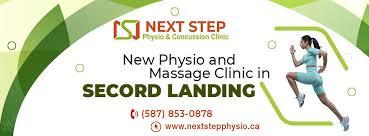Organizational Performance and Culture in Practice 5CO01: Key Insights for HR Professionals

Introduction: Understanding the Importance of Organizational Performance and Culture in Practice 5CO01
In today's fast-paced and competitive business environment, the alignment of organizational performance with a strong and positive organizational culture is more critical than ever. Organizations must not only focus on achieving their goals but also on nurturing a culture that promotes innovation, employee engagement, and sustainability.
The CIPD Level 5CO01 Organizational Performance and Culture in Practice, helps HR professionals develop the skills needed to understand the connection between culture, strategy, and performance. This unit focuses on creating value through people and managing culture to align with organizational goals. In this article, we will explore the role of culture in practice, how it drives organizational performance, and offer strategies to implement these principles.
1. What Is Organizational Culture?
Organizational culture refers to the shared values, beliefs, behaviors, and norms that shape how employees interact within a company. It encompasses the way decisions are made, the approach to innovation, and how employees communicate and work together. Culture impacts everything from employee motivation to customer satisfaction, making it an essential component of business success.
A positive culture promotes teamwork, inclusivity, and a sense of belonging, while a negative culture can lead to low morale, high turnover, and diminished productivity. Therefore, understanding and managing culture is a fundamental aspect of driving organizational performance.
2. How Organizational Culture Affects Performance
Culture is the invisible force that shapes an organization's performance. Here's how culture can influence key performance metrics:
- Employee Engagement: A supportive and inclusive culture enhances employee motivation and engagement, leading to higher productivity.
- Innovation: Cultures that encourage open communication and risk-taking foster innovation and creativity.
- Retention Rates: Employees are more likely to stay with companies that have a strong, positive culture, reducing turnover and recruitment costs.
- Customer Satisfaction: A happy workforce typically translates into better customer service and higher levels of customer satisfaction.
- Adaptability: A flexible and growth-oriented culture allows organizations to adapt to changes in the market, staying competitive.
Organizational culture can either drive or hinder success. A well-defined culture aligned with strategic goals can lead to sustained success and high performance.
3. The Role of HR in Shaping Culture
Human Resource professionals play a pivotal role in shaping, maintaining, and evolving organizational culture. Here are the key functions HR can perform to nurture culture:
Recruitment and Onboarding
HR professionals are responsible for hiring individuals whose values align with the company culture. Onboarding programs should emphasize the importance of organizational culture to ensure new employees integrate smoothly.
Employee Development
Continuous training and development opportunities should be provided to reinforce the desired behaviors that reflect the company culture.
Performance Management
Performance management systems should reward behaviors and outcomes that align with cultural and organizational goals, creating a culture of high performance.
Leadership Development
HR should focus on developing leadership programs that promote a culture of transparency, inclusiveness, and innovation, as leaders set the tone for organizational culture.
4. Strategies for Enhancing Organizational Performance Through Culture
Enhancing organizational performance through culture involves several strategic initiatives:
1. Align Culture with Strategic Goals
Ensure that the organization's culture is aligned with its overall strategic objectives. If the business aims to be innovative, the culture must promote creativity and risk-taking.
2. Foster Open Communication
Cultivate a culture where employees feel comfortable sharing ideas, giving feedback, and raising concerns. Transparency builds trust and leads to better decision-making.
3. Prioritize Employee Well-being
Organizations that prioritize employee well-being create a more motivated workforce, leading to increased productivity and reduced absenteeism.
4. Measure and Monitor Culture
Use surveys, focus groups, and performance metrics to assess the current state of the organizational culture. Monitor changes and adjust policies and initiatives to ensure ongoing alignment with goals.
5. Recognize and Reward Cultural Ambassadors
Identify and reward employees who embody and promote the desired organizational culture. This encourages others to follow suit.
5. CIPD 5CO01: Key Learning Outcomes
The CIPD Level 5CO01 Organizational Performance and Culture in Practice unit equips HR professionals with the knowledge and tools to manage culture effectively. Key learning outcomes include:
- Understanding the relationship between organizational culture and performance.
- Developing strategies to shape culture that aligns with business objectives.
- Exploring how leadership and management styles impact culture.
- Learning how to implement cultural change to drive business performance.
- Assessing the effectiveness of cultural initiatives and their impact on the workforce.
6. Implementing Culture and Performance Practices in Real-World Settings
To implement cultural and performance practices in a real-world setting, HR professionals should:
- Conduct a Cultural Audit: Assess the existing culture to identify areas that need improvement or reinforcement.
- Engage Leadership: Secure commitment from senior leadership to model and promote the desired cultural changes.
- Develop Training Programs: Implement training programs that reinforce cultural values and behaviors aligned with performance goals.
- Create Clear Communication Channels: Ensure employees understand how their roles contribute to the overall success of the organization.
- Track Progress: Continuously monitor the impact of cultural changes on organizational performance, making adjustments as necessary.
7. Common Challenges and Solutions in Managing Organizational Culture
Managing culture is not without its challenges. Here are some common issues and solutions:
Challenge 1: Resistance to Change
Solution: Implement change management strategies that include clear communication, leadership buy-in, and employee involvement.
Challenge 2: Misalignment Between Culture and Strategy
Solution: Regularly review organizational culture to ensure it aligns with evolving business objectives.
Challenge 3: Lack of Employee Engagement
Solution: Foster a participatory culture where employees feel their voices are heard and their contributions are valued.
Challenge 4: Undefined Culture
Solution: Clearly articulate and communicate the organization's core values, mission, and vision to establish a unified culture.
8. FAQs on Organizational Performance and Culture in Practice
Q1: What is organizational culture in the context of CIPD 5CO01?
A: Organizational culture in CIPD 5CO01 refers to the shared values, beliefs, and behaviors within an organization that influence performance and decision-making.
Q2: How does culture impact organizational performance?
A: Culture impacts performance by shaping employee behavior, engagement, and motivation, which directly affect productivity, innovation, and customer satisfaction.
Q3: Can HR alone change organizational culture?
A: No, changing culture requires a collaborative effort across all levels of the organization, with strong leadership and employee involvement.
Q4: What are the key takeaways from CIPD 5CO01?
A: Key takeaways include understanding the link between culture and performance, learning how to align culture with strategy, and developing the skills to implement cultural change.
Q5: How can I measure the effectiveness of cultural initiatives?
A: Use tools like employee surveys, performance reviews, and turnover rates to gauge the impact of cultural initiatives on organizational performance.
9. Conclusion: The Synergy Between Culture and Organizational Success
Organizational performance and culture are intertwined, and the role of HR in managing this relationship is pivotal. The CIPD 5CO01 unit offers invaluable insights for HR professionals, teaching them to align culture with strategy to drive success. By understanding, nurturing, and evolving a positive organizational culture, businesses can boost employee engagement, enhance innovation, and achieve long-term success.
Whether you are already working in HR or aspiring to enter the field, mastering the principles taught in CIPD 5CO01 will equip you with the tools to make a real impact on your organization's performance through culture.
Call to Action:
Are you ready to enhance your HR skills and drive organizational success? Explore the CIPD Level 5 qualification and start transforming culture in your workplace today!





